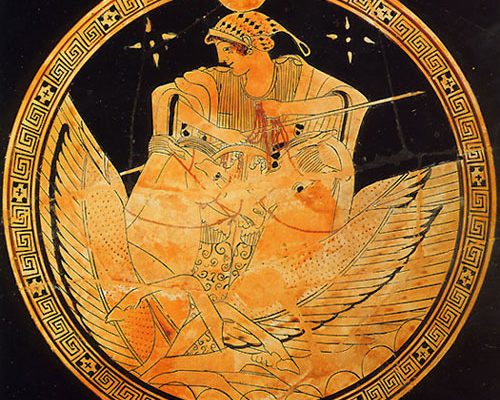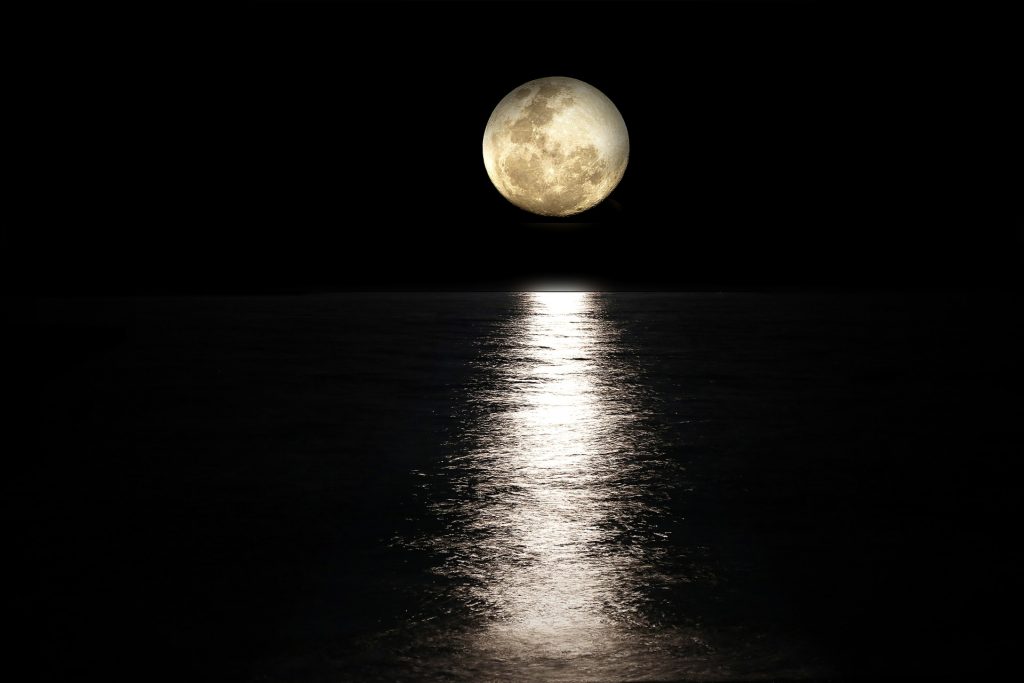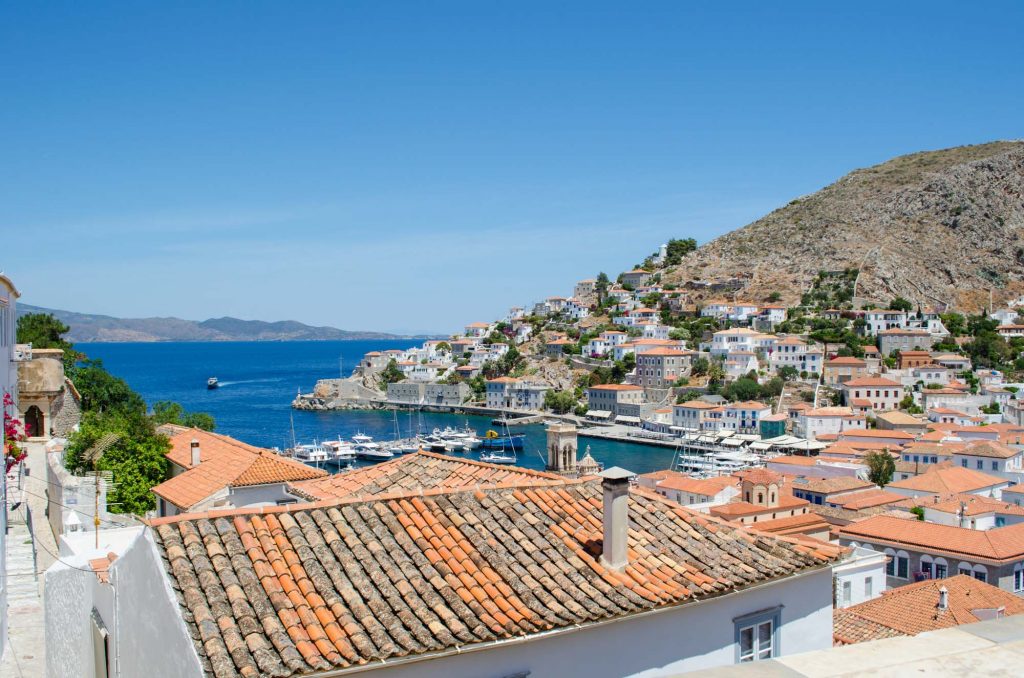A celestial body of magic and mystery, the moon has fed the imaginations of poets, artists, and musicians. Maybe it’s the subconscious connection with the amorous ancient Greek goddess of the moon, Selene, or the moon’s association with fertility. It could also be her ever changing nature that captures our attention. Her light illuminates our quietest and most romantic hours.
Or maybe it’s simply that everything looks so romantic in the moonlight. Perhaps it’s all of these. In any case, her inspiration has elicited a powerful response, stretching back through the millennia. Here are some of the highlights:
The Moon: A timeless source of inspiration
- Sappho (630 – 570 BC), the famous Greek poet from the island of Lesvos, wrote lyric verses (meant to be sung, to the accompaniment of the music of a lyre) of beauty. Only fragments survive, but these were enough to secure her lasting reputation.
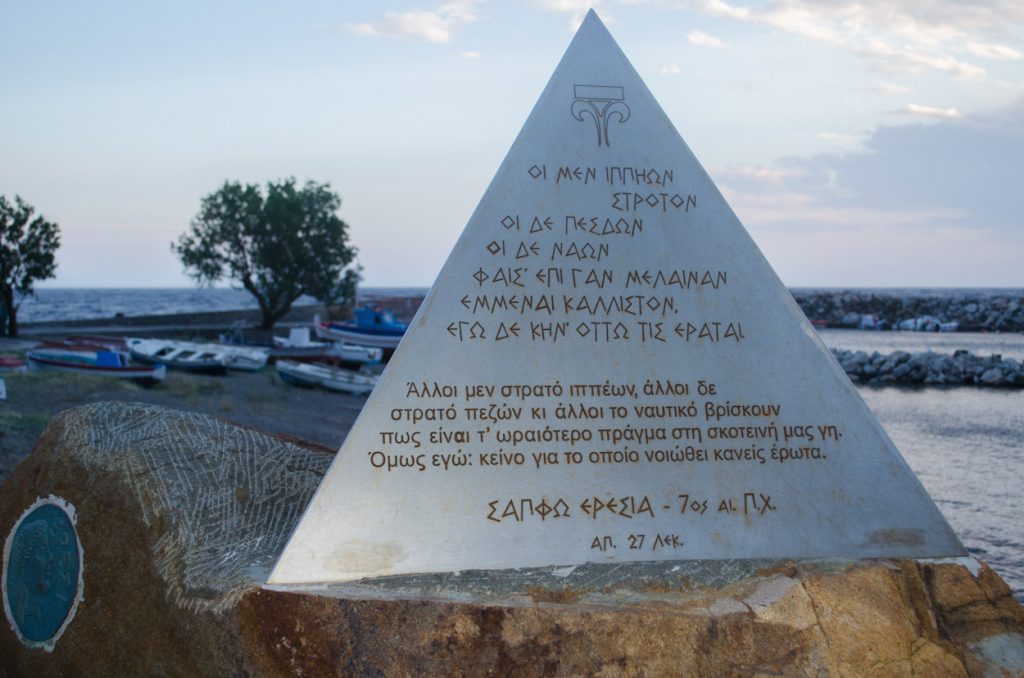
The stars about the lovely moon
Fade back and vanish very soon
When, round and full, her silver face
Swims into sight and lights all space
-Sappho
- The Brygos Painter– Scholars have associated this name with several Red Figure pottery vessels painted in a distinctive style during the early part of the 5th C BC (480’s and 470’s) of Red Figure pottery, signed Brygos. His works are singled out for their expressive character. One of them is a Kylix- a shallow, two-handled wine drinking cup. It depicts the moon goddess Selene drives her chariot across the sky. Two winged horses pull it. She wears a night cap, and the moon itself is perched atop her head, like a glowing crown. (Another of the Brygos painter’s works depicts the poet Sappho — mentioned above.)
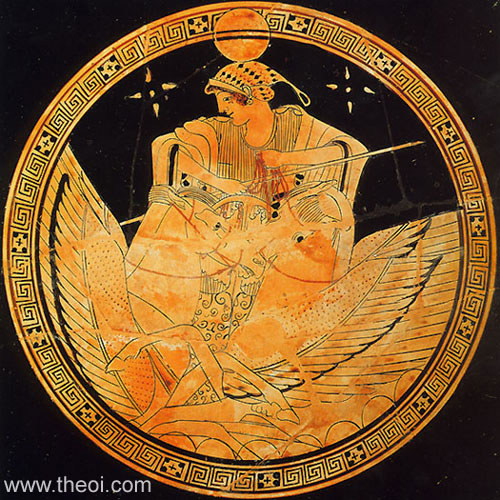
- Heroic Philhellene Lord Byron (1788 – 1824) was as famous for the depth of his sentiments for Greece as he was for his verse. He joined the Greek War of Independence, and died in Missolonghi. His name is carved in the Temple of Poseidon at Sounio, along with those of other 19th C adventurers.
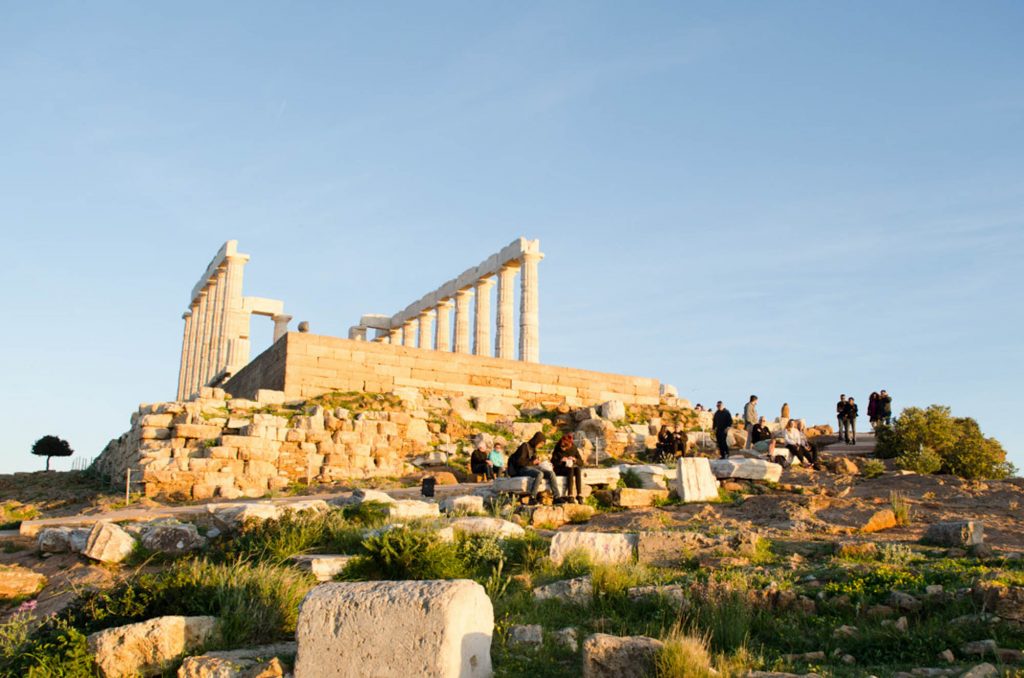 The following poem- with the moon as companion to nighttime roving and romance- was enclosed in a letter to Thomas Moore in 1817. Byron was just 29, and given his reputation as a man who embraced life so fully in every possible way, this poem seems a strange and touching admission of fatigue.
The following poem- with the moon as companion to nighttime roving and romance- was enclosed in a letter to Thomas Moore in 1817. Byron was just 29, and given his reputation as a man who embraced life so fully in every possible way, this poem seems a strange and touching admission of fatigue.
So, we’ll go no more a roving
So late into the night,
Though the heart be still as loving,
And the moon be still as bright.
For the sword outwears its sheath
And the soul wears out the breast
And the heart must pause to breathe
And love itself have rest.
Though the night was made for loving,
And the day returns too soon,
Yet we’ll go no more a roving,
By the light of the moon.
- Constantine Peter Cavafy (1863 – 1933) – nearly referred to always just as “Cavafy” in Greece, where he is perhaps the best loved of all the poets, was a Greek of Alexandria, Egypt. His work is touching, profound, and yet deeply accessible. The light of the moon evokes the poem’s vivid imagery with great power:
In a Town of Osroini
Yesterday, around midnight, they brought us our friend Remon
Who’d been wounded in a taverna fight.
Through the windows we left wide open,
The moon cast light over his beautiful body as he lay on the bed.
We’re a mixture here: Syrians, migrated Greeks, Armenians, Medes.
Remon too is one of this kind. But last night,
When the moon shone on his sensual face,
Our thoughts went back to Plato’s Charmidis.
- Nikos Hadjikyriakos Ghikas (1906 – 1994), one of Greece’s finest 20th C painters, united modernism with deeply Greek sensibilities, practicing a style of cubism that owed much Byzantine painting. His works are a celebration of the purity of the Greek light and of the landscape, both natural and urban. This work of 1957 is entitled “Full moon”, or “Landscape by night.” The artist lived and worked much of the time on the island Hydra, much like our final contributor.
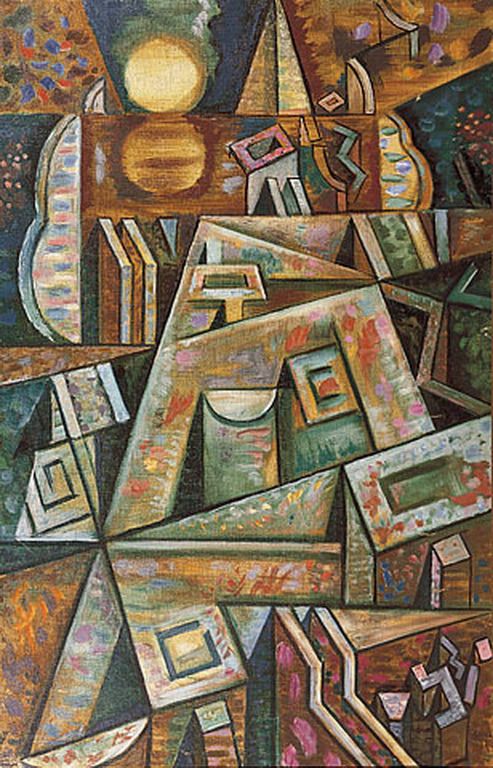
- For the poet and songwriter Leonard Cohen (1934 – 2016), Greece was a spiritual home. He bought a house in Hydra in 1960, and wrote a lot of songs here. He also wrote this poem:
Days of Kindness
Greece is a good place
to look at the moon, isn’t it?
You can read by moonlight
You can read on the terrace
You can see a face
As you saw it when you were young
What are some of your favorite songs and works of art inspired by the moon?

